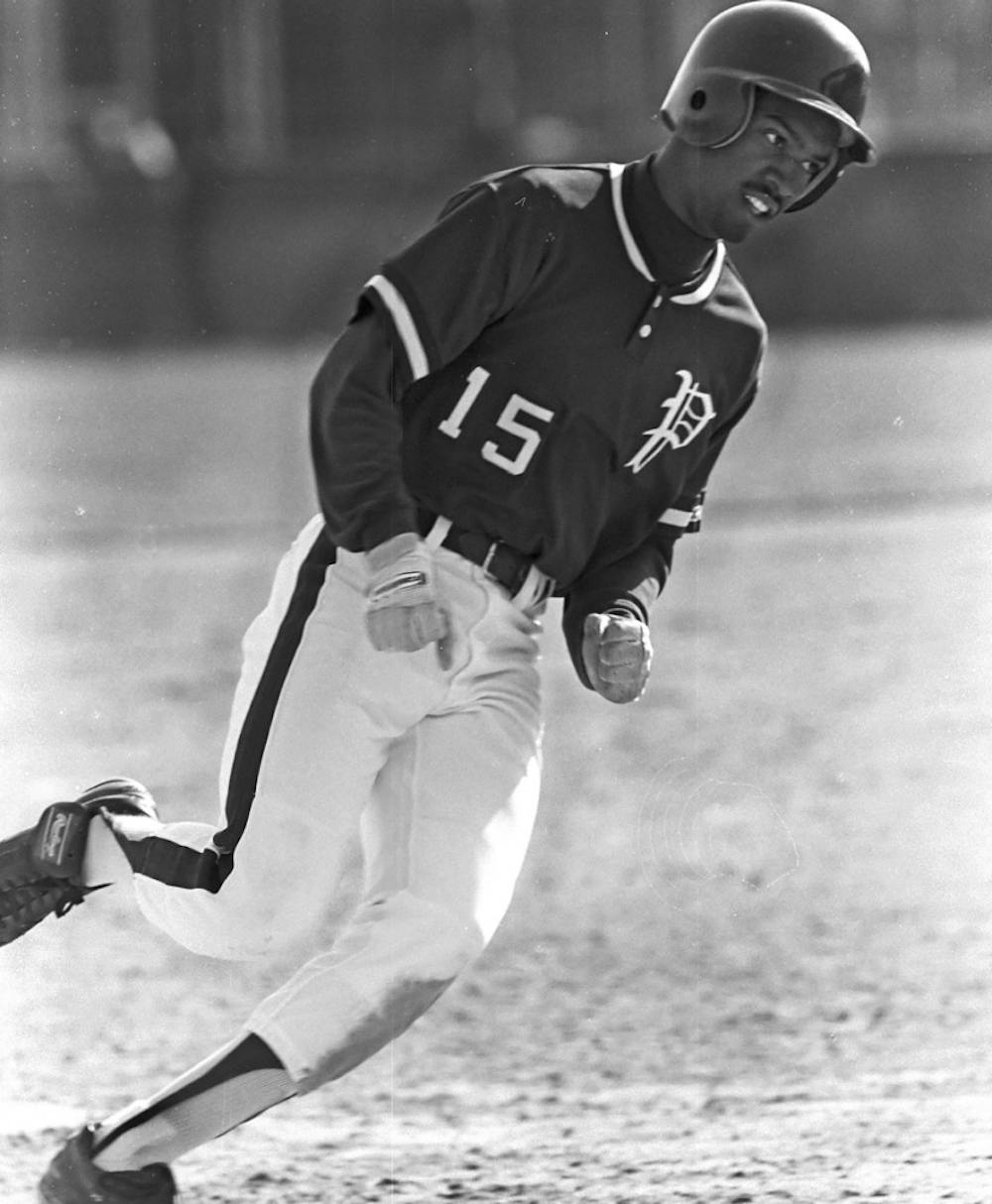Major League Baseball scouts always had their eyes on Doug Glanville.
“I remember walking down to the bullpen to take some swings off the tee,” the former Quaker and Phillie said. “When I did [a] U-turn, there was a sea of like 15 to 20 people that followed me.”
Two decades ago professional talent evaluators flocked to see Glanville, who would become the 12th overall pick of the 1991 draft. But only one or two current Quakers are drawing interest from scouts, Penn coach John Cole said.
In the age of the internet, the process of trying to get drafted into the professional leagues is as complex as ever. As numerous Ivy League players are discovering, today’s environment provides several different paths for a player to follow to get exposure — the Ivies being the road less traveled.
Today, in addition to several jobs in sports media, Glanville serves as a consultant for Baseball Factory, an organization founded by former Penn player and 1993 College graduate Steve Sclafani that specializes in high school player development. It provides players with valuable, pre-college experience and has produced over 2,500 MLB draftees.
Though Baseball Factory is used primarily as a stepping stone to a collegiate (or professional) career, it also serves as a way to put players in the national spotlight early on in the process.
According to Scalfani, 38 current Ivy Leaguers went through his program. Four of those 38 are current Quakers: freshman Emilio Pastor, sophomore Derek Vigoa, junior Paul Cusick and senior Reid Terry.
Cusick is also one of many Ivy players who have participated in wooden bat summer leagues, which give college ballplayers around the nation an opportunity to stay sharp during the offseason and see where they fit in on the national scale.
“You’re playing against kids from all over the country so they have a chance to expose themselves to a different group of people,” Cole explained.
Further, summer leagues give scouts concentrated areas in which to find and evaluate talent. In Scalfani’s view, they offer “the key for [Ivy] players when it comes to the draft.”
That is how Glanville’s ultimate breakthrough occurred. The outfielder took home the Top Pro Prospect award at the Cape Cod Summer League after his sophomore season and “rode the wave” of that feat into his junior year and the subsequent MLB draft.
Current Cornell pitcher Corey Pappel, a junior who played in the New York Collegiate Baseball League during the summer, is looking to have similar success. But the right-hander continues to deal with the main temptation that draft hopefuls experience throughout their careers: outwardly trying to impress scouts.
“They’re pretty easy to notice, because they all sit in a cluster behind home plate and simultaneously aim radar guns like a miniature firing squad,” Pappel said in an e-mail. “It can be distracting, and a little extra pressure.”
For this reason, Cole doesn’t even notify his players when a scout contacts him to discuss their performance.
“It becomes a selfish thing if guys worry about it,” said Cole, who estimated that he has coached 43 draft picks during his 22-year career. “I’ve seen a lot of guys ruin their chances by being distracted by a radar gun or scouts and start looking around [thinking] ‘who’s watching me?’”
Pappel admitted to doing just that.
“The only instances I know of that I actively try and impress are certain counts when I get a fastball and know that I can take the liberty of throwing it with everything I’ve got,” he said. “In these cases I’ll sometimes try for a max-velocity throw and sacrifice some command.”
In addition to the distractions scouts may cause, the Big Red hurler also noted that “playing in the Ivy League definitely makes it more difficult for a player interested in a professional career.” He explained that while teams across the country schedule a calendar full of games, the Ivy League imposes strict “scheduling limitations” on how much a team can play.
“Less playable games means both less opportunity for exposure and less time to find a groove and rhythm,” Pappel said.
Still, a few Ivy players manage to get their names called when the June draft comes around each year. Shawn Haviland, a 2008 Oakland Athletics draft pick out of Harvard, summed up the process of attracting scouts best.
“If you can play, they are going to find you,” he said in an e-mail.
But according to Glanville, “there will always be a little bit of a stigma” attached to major league talents who played in the Ivy League.
The perception of these players, he said, is that “they tend to think they’re too smart for their own good or [they're] over-thinking or having too many options so they might walk away from the game.”
Despite battling these labels throughout his nine-year career, Glanville ranks among the best to ever come out of the Ivies. That exclusive group includes current San Francisco Giants utility player Mark DeRosa, a 1997 Wharton Graduate, and current San Diego Padres pitcher Chris Young, a 2002 Princeton Graduate. Even New York Yankees legend Lou Gehrig attended Columbia in the 1920’s but did not graduate.
These days, aspiring Ivy League draftees looking to one day join that “little club,” as Glanville put it, live by one adage.
“Playing college baseball is a goal,” Pappel said. “Playing professional baseball is a dream.”



